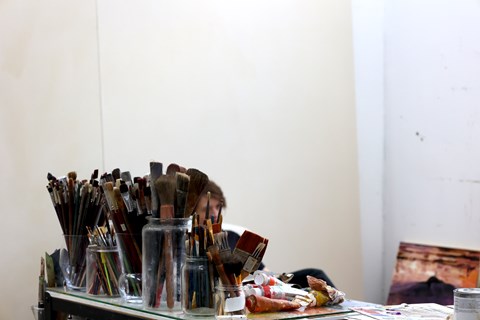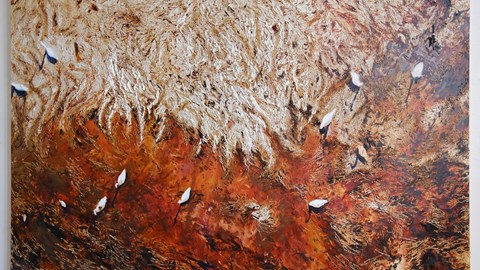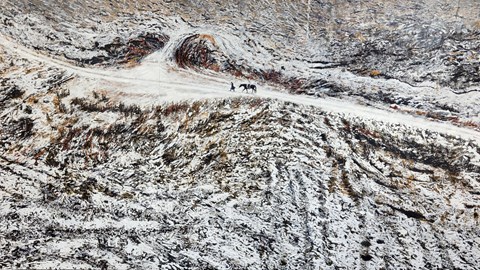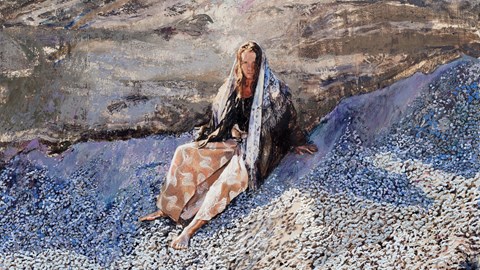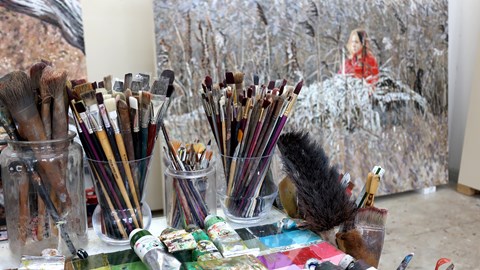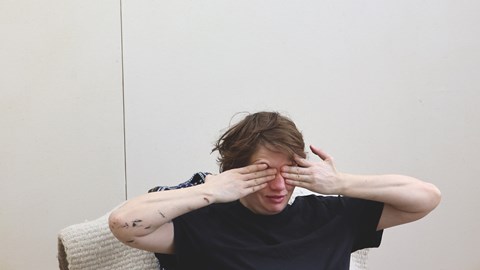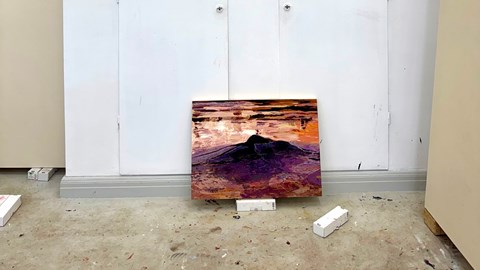Sara-Vide Ericson takes art to the Arctic
 Sara-Vide Ericson. Photo: Christian Larsson
Sara-Vide Ericson. Photo: Christian Larsson
Artist Sara-Vide Ericson has been accepted for this year's expedition to the Arctic aboard the icebreaker Oden – a unique opportunity to combine artistic creation with the extreme environment of the Arctic. With an international track record and a passion for large-scale oil paintings, she has long sought the opportunity to challenge herself – both artistically and personally.
What made you apply for Canada Sweden Arctic Ocean 2025?
– I've wanted to apply for this my whole life, I thought! But it was only now that it would work or fall into good soil, both on a private and artistic level. My name is Sara-Vide Ericson; I work as an artist, and I live in southern Hälsingland. I work with large-scale oil paintings that focus on internal states but on external events. Painting often has to work with or against the landscape and can thus capture our inherent ambivalence towards nature and the battlefield that it is – a place where everything oscillates between destroying and being destroyed.
How would you describe your art to someone who has never seen it?
– As a representational oil painting, at least from a distance. Because when you get closer, the larger picture breaks up into an expressive, violent puzzle of color, and remnants of a careless pounding of the brush and other tools. Sometimes with people in the landscape and often filled with strong contrasts between light and dark. Sometimes I also spray the color so that it builds a body and can rise up from the canvases like a topography.
Tell us about the project you want to carry out during the expedition.
– During the expedition, I plan to work on a project that captures the mythical and historical dimensions of the Arctic. I want to explore how emptiness can be filled with new experiences and how this reflects humanity's search for meaning in a time of climate crisis – with references to both prehistoric myths and modern urbanity. The experiences from the expedition will then become the basis for my artistic production over the next two years, with a planned solo exhibition in 2026–2027.
The project that you want to carry out has a strong connection to mythology and the inner encounter with nature. How did the idea of working with this during the expedition come about?
– In recent years, I have worked a lot on the hero and his journey, and perhaps especially a lot on what I am working on right now in the studio. According to prehistoric tradition, myths are always anchored in the real landscape, and regions around the Arctic have always been considered a frightening corner of the world. Therefore, it felt like a logical step in the process I am in now, to follow in the footsteps of those who sailed to the outer edge of the earth and then allowed themselves to be swallowed. Fuzzy, perhaps, is a rather pragmatic way of looking inward by allowing yourself to be exposed to the outside.
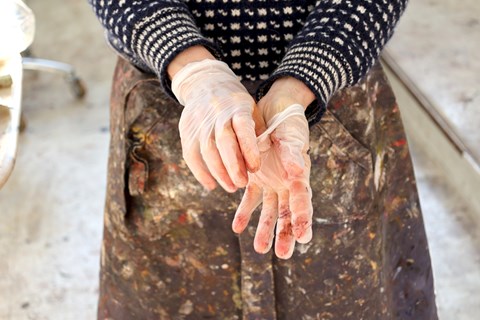
How do you feel that your work with painting and text complement each other?
– The painting always comes first, and the thought afterward. That is the natural order and why the medium is so strong. But painting is metaphysical and comes with certain experiences, and in recent years, I have been writing a logbook in the studio and letting the texts grow and follow the painting like a tail, like its own boatswain's song. In the past, it was more common for painters to write a logbook, and I think it is important that those who know the ocean are the ones who create a language around its principles.
How did it feel to receive the news that you were accepted for the expedition?
– Overwhelmed with joy, I have probably never been so happy about something like this, although there is nothing like it. What I mean is that it is a big commitment to ask to travel in this way, and once you have formulated it – there is no turning back. Then it was real, and it meant a lot to me that I got it.
In what way do you think the extreme Arctic environment will influence your creation?
– I like to expose myself and my senses, which are the tools for making paintings, to situations that can change what was the previous form. That's why I prefer to be the model for my paintings myself – that I have stood in them, lived in them, and felt how they tear at the skin and come into being there and then. I often think of it as a strange kind of extreme sport, minus the sporty aspect, and that's why I often look for the extreme. It's in the extremes that the big differences are visible.
Is there anything in particular you hope to get out of this expedition, both as an artist and as a person?
– That I stop being so terribly afraid of paperwork and administration because there was a lot to prepare for this trip. No, joking aside, yes, a lot. But that has to follow in the artistic expression because, just like with research, you can know what you are looking for – but not what you get.
